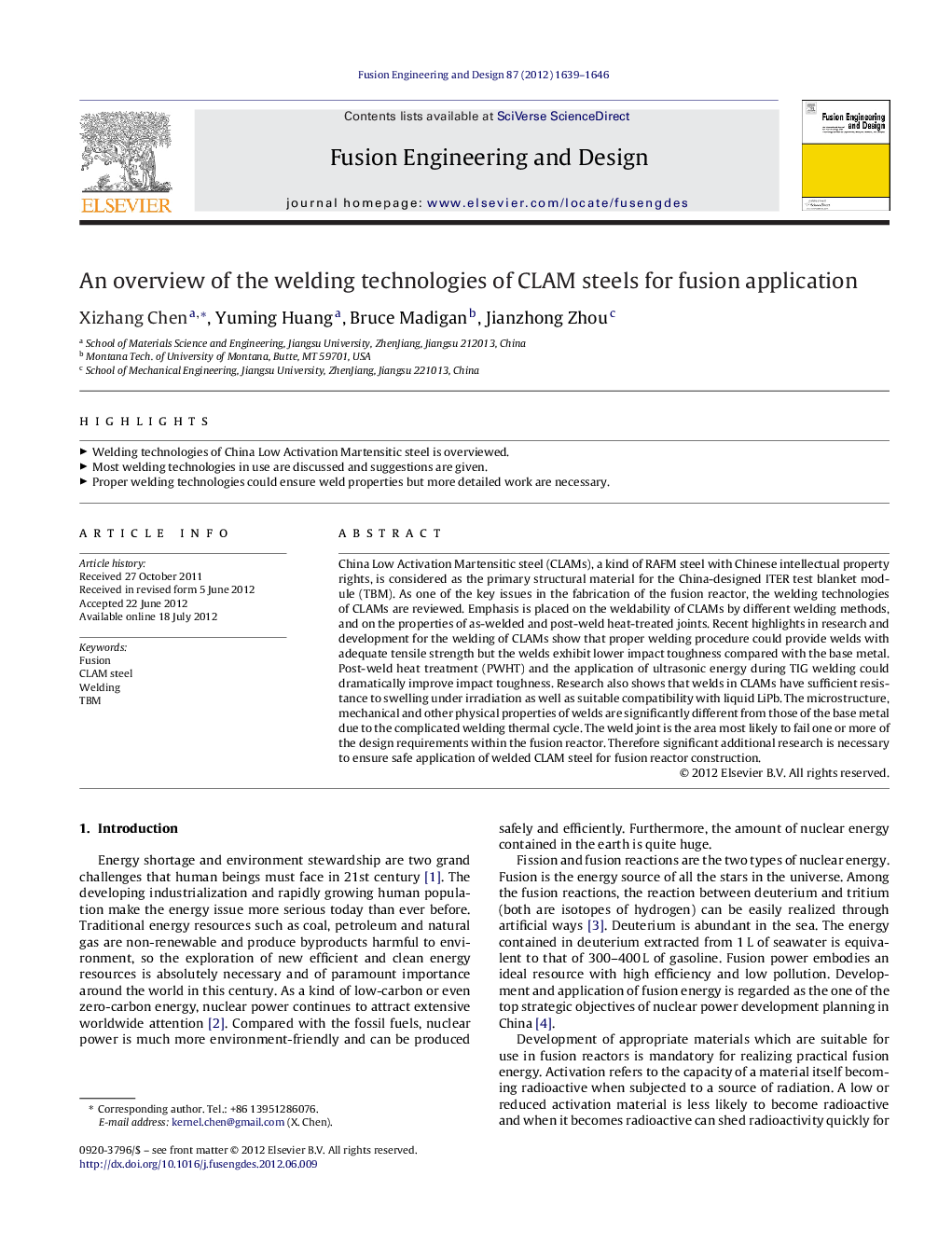| Article ID | Journal | Published Year | Pages | File Type |
|---|---|---|---|---|
| 272165 | Fusion Engineering and Design | 2012 | 8 Pages |
China Low Activation Martensitic steel (CLAMs), a kind of RAFM steel with Chinese intellectual property rights, is considered as the primary structural material for the China-designed ITER test blanket module (TBM). As one of the key issues in the fabrication of the fusion reactor, the welding technologies of CLAMs are reviewed. Emphasis is placed on the weldability of CLAMs by different welding methods, and on the properties of as-welded and post-weld heat-treated joints. Recent highlights in research and development for the welding of CLAMs show that proper welding procedure could provide welds with adequate tensile strength but the welds exhibit lower impact toughness compared with the base metal. Post-weld heat treatment (PWHT) and the application of ultrasonic energy during TIG welding could dramatically improve impact toughness. Research also shows that welds in CLAMs have sufficient resistance to swelling under irradiation as well as suitable compatibility with liquid LiPb. The microstructure, mechanical and other physical properties of welds are significantly different from those of the base metal due to the complicated welding thermal cycle. The weld joint is the area most likely to fail one or more of the design requirements within the fusion reactor. Therefore significant additional research is necessary to ensure safe application of welded CLAM steel for fusion reactor construction.
► Welding technologies of China Low Activation Martensitic steel is overviewed. ► Most welding technologies in use are discussed and suggestions are given. ► Proper welding technologies could ensure weld properties but more detailed work are necessary.
